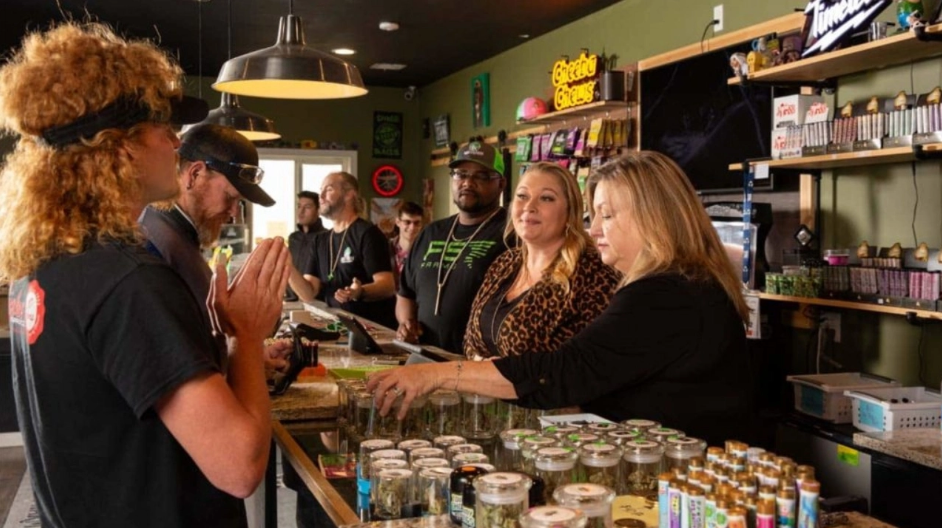Business
Opinion: How cannabis retailers can improve woefully inadequate consumer education

Math is inevitable in the world of business.
Statistics, data, demographic data – all are important tools in the arsenal of modern business, and they’re potent when used correctly.
This is just as true for cannabis as any other business, but surprisingly few entrepreneurs and executives that I meet are well-versed in statistics or calculus, regardless of their supposed focus on data.
As someone with essentially a fancy mathematics degree, I’m writing today to dish out a little lesson in basic math – the calculation of an average and how that impacts cannabis marketing.
Rapid growth
First, let’s look at the overall cannabis market today to establish a baseline fact I think anyone reading MJBizDaily already believes: The marijuana market is growing rapidly.
According to an August 2021 Gallup poll, 12% of adults in the United States say they currently smoke cannabis, up from 7% in 2013.
In my home state of Massachusetts, legal cannabis sales have already surpassed $1 billion annually and are projected by the 2022 MJBiz Factbook to grow to as much as $2.6 billion by 2025.
By some accounts, the global cannabis market is projected to grow from $28.3 billion in 2021 to a truly startling $197.74 billion by 2028.
As the U.S. and other countries legalize more fully, there will continue to be a rapid influx of new customers to retail stores and dispensaries.
As any budtender could probably tell you, a majority of consumers know next to nothing about cannabis when they show up at a store for the first time.
There are a select few traditional market participants who make the switch, and even they are often undereducated on topics beyond flower.
It is still surprising to most people that you can even put cannabis in a beverage, and it is difficult and confusing to try to explain to them how marijuana-infused drinks differ from the pot brownie they tried in their youth.
Thus, I postulate that the education level of new consumers when entering the market, on a scale of 0 to 10, is zero.
Which isn’t great when I would say the average consumer education level today is maybe a 2.
Much to learn
There is so much to learn about cannabis.
It took me nearly a decade to achieve the understanding of the cannabis products I have today – and I create cannabis products for a living.
From THC and CBD and all the other three-letter cannabinoids to the hundreds of terpenes that exist in a flower, to extracts – BHO, EHO, CO2, rosin, hash – to things such as nanoemulsions, metabolism of delta-9 THC into delta-11 THC, it takes a long time to learn it all.
Don’t even get me started on sativas.
We can’t educate people about cannabis nearly as fast as new consumers will come into the marketplace, and so because the rate of cannabis education is much, much slower than the rate of new consumers coming into dispensaries, the average education level of consumers will continue to decline to nearly zero.
This will be true for at least the next decade, if not longer.
Keep it brief
So what are we to do about this when trying to educate consumers about why your product will work best for their needs?
Remember that people learn more quickly with short, pithy messages they can remember.
If you’re a brand, focus on educating them on the message of your product. Brevity is your friend.
Memory tricks, mnemonics – anything it takes to get your message across quickly and clearly.
Consumers will almost never engage with products in the way that you do, and you need to continue to put yourself in their shoes: What is the most important takeaway?
How do we communicate that both textually and visually? How do we communicate that psychologically and subliminally?
Budtender training
Consumer education does remain important, and putting a premium on budtender training – the folks who know this stuff for a living – is the best way to quickly disseminate information to consumers and train real guides out there who actually help people.
This goes double for medical cannabis patients, as there are still many, many new patients who need MMJ to get through their daily lives.
Budtenders can be a powerful source for both sales and accurate information if brands and dispensaries provide them with accurate information and make it easy to engage with.
And if we’re being honest, we’ve done a terrible job as an industry of arming budtenders with the information they need – I’m almost never given accurate information by budtenders at stores I visit.
Ultimately, if your product relies on the well-educated consumer who has the time to learn everything possible to decide whether to select your product, you will lose market share to those who build that quality into their communication.
People simply won’t be able to keep up, and you’re kidding yourself if you believe most customers will be reading those terpene certificates of analyses and actually understand what they’re looking at and have a reference point for if 3% terpenes is high or low for rosin.
But if you meet cannabis consumers where they are, and dispense information quickly and accurately, you can build a following that will grow with the market instead of fall behind.
Adam Terry is the CEO and co-founder of Cantrip, a cannabis beverage company based in Framingham, Massachusetts. He can be reached at adam@cantripseltzer.com.
To be considered for publication as a guest columnist, please submit your request here.
Source: https://mjbizdaily.com/how-cannabis-store-owners-can-improve-woefully-inadequate-consumer-education/